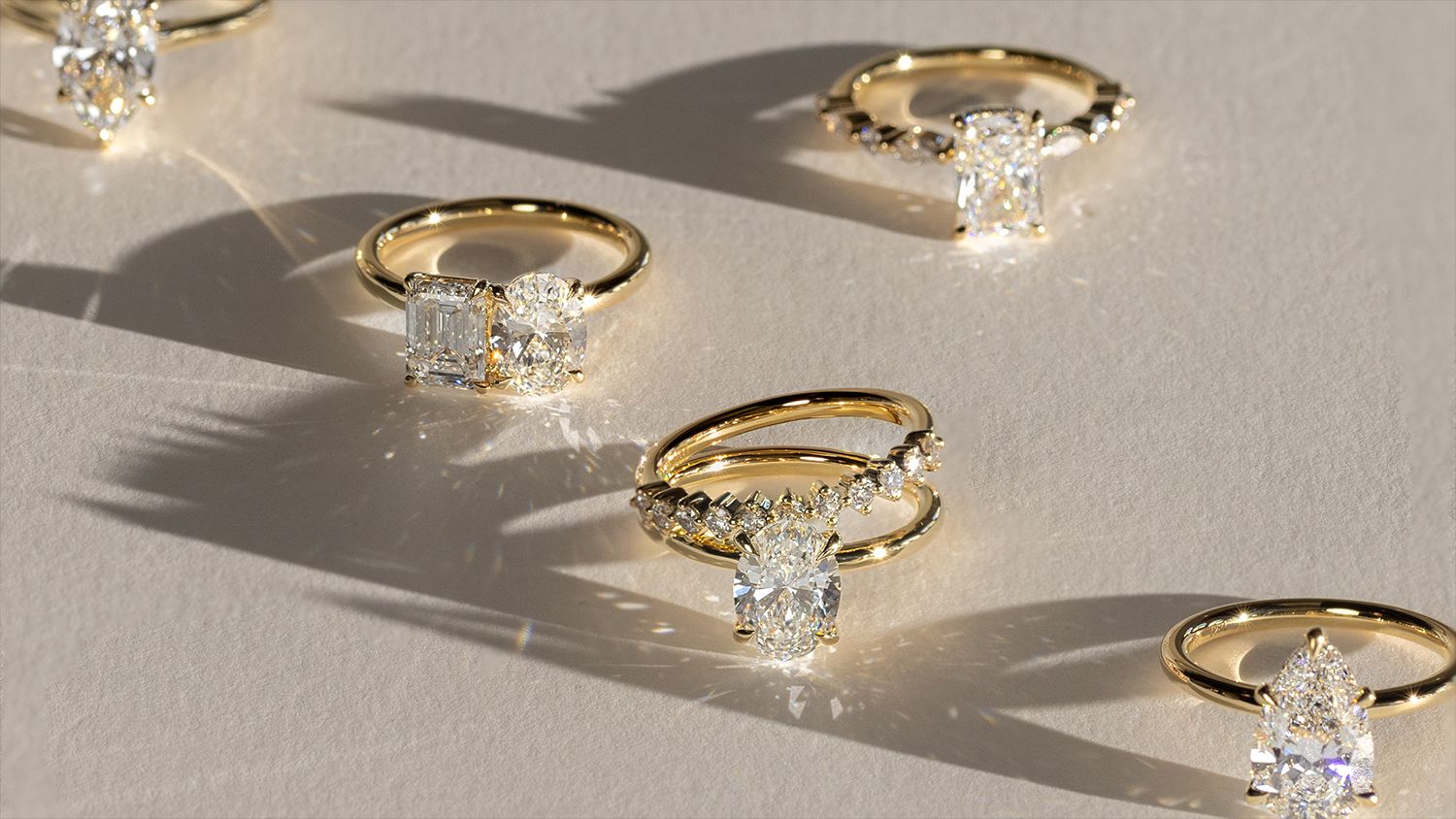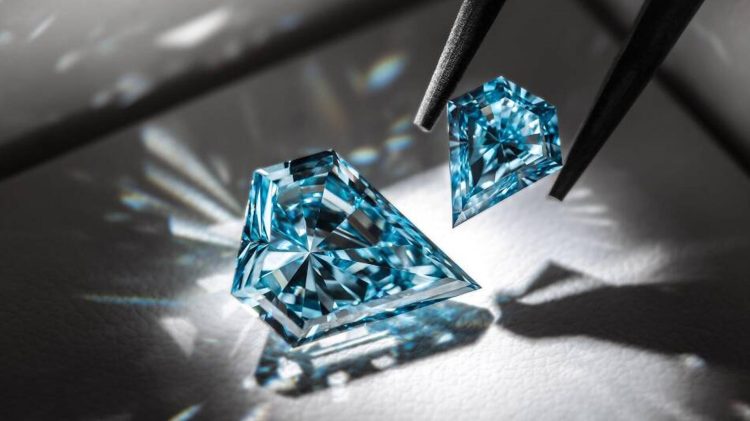The jewelry industry, historically seen as a symbol of luxury and opulence, is undergoing a profound transformation. What was once defined by exclusivity, rarity, and opulence is now being challenged by a growing consumer demand for sustainability. The driving force behind this change? Sustainable gems.
As the world becomes increasingly aware of the environmental and ethical issues tied to gemstone mining, the demand for responsibly sourced, eco-friendly alternatives has surged. But can sustainable gems truly revolutionize the jewelry industry? Let’s explore this evolving trend and its potential to reshape the future of fine jewelry.
The Shift Toward Sustainability: A New Age for Luxury
In the past, luxury jewelry was all about rarity, high-end craftsmanship, and the prestige of owning something few could afford. However, as the global conversation about environmental sustainability and ethical sourcing grows louder, many luxury consumers are shifting their focus from “exclusivity” to “responsibility.”
Sustainable gems are part of a broader movement towards conscious consumerism, where individuals are not just concerned about how a product is made, but also about the impact it has on the environment and the people who create it. This shift is particularly significant in the jewelry industry, where the mining of precious stones has long been linked to environmental degradation, human rights abuses, and unsustainable practices.
Sustainable gems—whether they are lab-grown, responsibly mined, or recycled—offer consumers a way to indulge in the luxury of jewelry while also aligning their purchases with their values.
What Makes a Gem Sustainable?
When it comes to sustainable gems, the term “sustainability” can encompass several important factors, each contributing to the overall environmental and ethical footprint of the gemstone.
1. Lab-Grown Gems: The Eco-Friendly Alternative
Lab-grown gemstones, also known as synthetic or man-made stones, are one of the most exciting innovations in the world of sustainable jewelry. These gems are created using high-tech methods that replicate the natural processes of gem formation in a controlled laboratory environment. The result is a gemstone that is chemically and physically identical to its mined counterpart, but without the environmental impact.

Lab-grown diamonds, sapphires, rubies, and emeralds are just a few examples of stones that can be sustainably produced. Not only are these gems free from the destructive practices associated with traditional mining (such as deforestation and habitat destruction), but they also come with a significantly lower carbon footprint.
2. Ethically Mined Gems: A Step Toward Transparency
Ethically mined gems are those that are sourced from mines that adhere to strict environmental and social standards. These standards often include responsible land management, safe working conditions, fair wages for miners, and no child or forced labor. Many ethical mining operations also focus on minimizing the environmental impact of extraction by using sustainable mining techniques and investing in the rehabilitation of the land after extraction.
Organizations like the Responsible Jewellery Council (RJC) and Fairmined are setting the benchmarks for ethical mining, ensuring that consumers can trace the origins of their gemstones and feel confident that their purchase supports both the planet and the people who work to bring these gems to life.
3. Recycled Gems: Giving Old Stones a New Life
Recycled gems offer a brilliant solution for reducing the demand for newly mined materials. These stones are sourced from old jewelry, luxury watches, or other second-hand items, then cleaned, re-cut, and re-set into new designs. This process not only conserves valuable resources but also gives gems a second chance at life, making them an excellent choice for eco-conscious consumers looking for unique, sustainable pieces.
Recycling gems also reduces waste and avoids the environmental costs associated with new mining, helping to mitigate the negative impact on ecosystems.
Why Are Sustainable Gems Gaining Popularity?
1. Environmental Concerns and Consumer Awareness
The environmental damage caused by traditional gemstone mining is hard to ignore. Mining operations often lead to deforestation, loss of biodiversity, soil erosion, and pollution of nearby water sources. In some cases, the ecological consequences are so severe that entire ecosystems are destroyed. As consumers become more aware of these issues, they are increasingly demanding more sustainable alternatives to the jewelry they buy.
Sustainable gems, whether lab-grown or ethically sourced, provide a solution to this problem. By offering an environmentally friendly alternative, they give consumers a way to indulge in luxury without contributing to the degradation of the planet.
2. Ethical Sourcing and Human Rights
Another driving force behind the rise of sustainable gems is the growing concern over human rights abuses in the mining industry. In many parts of the world, gemstone mining has been linked to unsafe working conditions, child labor, and exploitation of vulnerable communities.
Ethically sourced and certified gems offer a way for consumers to ensure that their purchases are not supporting exploitative practices. Transparency in the supply chain, made possible by organizations like the Fairmined certification or the Kimberley Process for diamonds, helps consumers make informed choices about the origins of their jewelry.
3. Changing Consumer Values
Today’s consumers, especially millennials and Gen Z, are increasingly prioritizing values such as sustainability, ethical sourcing, and environmental responsibility when making purchasing decisions. They are looking for ways to reflect these values in their luxury purchases, and the jewelry industry is no exception. As a result, jewelers and designers are responding by offering more sustainable and ethically sourced gemstone options.
Moreover, social media and influencer culture have amplified the demand for transparent and responsible consumption. Jewelry brands are now using their platforms to educate consumers about the benefits of sustainable gems, creating a ripple effect that encourages more widespread adoption.
The Benefits of Sustainable Gems for the Jewelry Industry
The rise of sustainable gems presents several significant benefits for both consumers and the jewelry industry as a whole.
1. A Competitive Edge for Jewelers
As the demand for sustainability grows, jewelers who embrace sustainable gems can set themselves apart from the competition. Offering lab-grown, ethically sourced, or recycled gemstones appeals to a growing base of eco-conscious consumers who are willing to pay a premium for jewelry that aligns with their values.
Moreover, as the industry continues to shift toward sustainability, jewelers who fail to adapt may find themselves left behind. In an increasingly competitive market, offering sustainable gems is not just a trend—it’s becoming a necessity.
2. Innovation in Jewelry Design

The advent of lab-grown and recycled gems has opened up exciting new possibilities for jewelry design. These sustainable stones can be cut, shaped, and set in innovative ways that were previously difficult or impossible with mined stones. The ability to customize colors, clarity, and size of lab-grown gemstones also means that designers have greater flexibility to create unique, one-of-a-kind pieces.
In addition, the increasing availability of sustainable gems is allowing for greater experimentation with sustainable metals and production methods. Together, these innovations are driving a new era of jewelry design—one that values creativity, uniqueness, and responsibility.
3. Building Consumer Trust and Loyalty
Consumers today are increasingly concerned with the integrity of the brands they support. By offering sustainable gems, jewelers can build trust with their customers by demonstrating a commitment to environmental protection, ethical labor practices, and transparency in sourcing. This trust can translate into greater consumer loyalty, with buyers returning for more purchases and recommending brands to friends and family.
The Challenges Facing Sustainable Gems
Despite the many benefits, the widespread adoption of sustainable gems faces several challenges. One major hurdle is the cost. While lab-grown gemstones are often less expensive than their mined counterparts, they still require significant investment in technology and infrastructure to produce. Similarly, ethically mined gems tend to come with a premium due to the higher production costs associated with responsible mining practices.
Another challenge is educating consumers about the value of sustainable gems. Many still perceive lab-grown stones or recycled gems as inferior to mined stones, which can hinder their acceptance in the luxury market. Overcoming these perceptions will require continued education and awareness campaigns from jewelers, designers, and sustainability advocates.
Finally, the certification process for ethically sourced and lab-grown gems is still evolving. While there are several organizations working to establish and uphold industry standards, there is still a lack of uniformity across different regions and suppliers. The establishment of global certification standards will be key to ensuring the integrity of sustainable gems and boosting consumer confidence in their authenticity.
Conclusion: A Sparkling Future for Sustainable Gems
Sustainable gems are poised to revolutionize the jewelry industry by offering a responsible, eco-friendly alternative to traditional gemstones. With increasing consumer demand for sustainability, ethical sourcing, and environmental responsibility, the jewelry industry is embracing change. Lab-grown, ethically mined, and recycled gems represent a powerful shift toward a more sustainable and transparent luxury market.
While challenges remain, the potential for sustainable gems to reshape the jewelry landscape is immense. As technology advances and consumer awareness grows, the future of luxury jewelry looks increasingly green—and this is just the beginning. For both the planet and the people who cherish fine jewelry, sustainable gems are not only a trend, but a promising revolution in the making.

















































